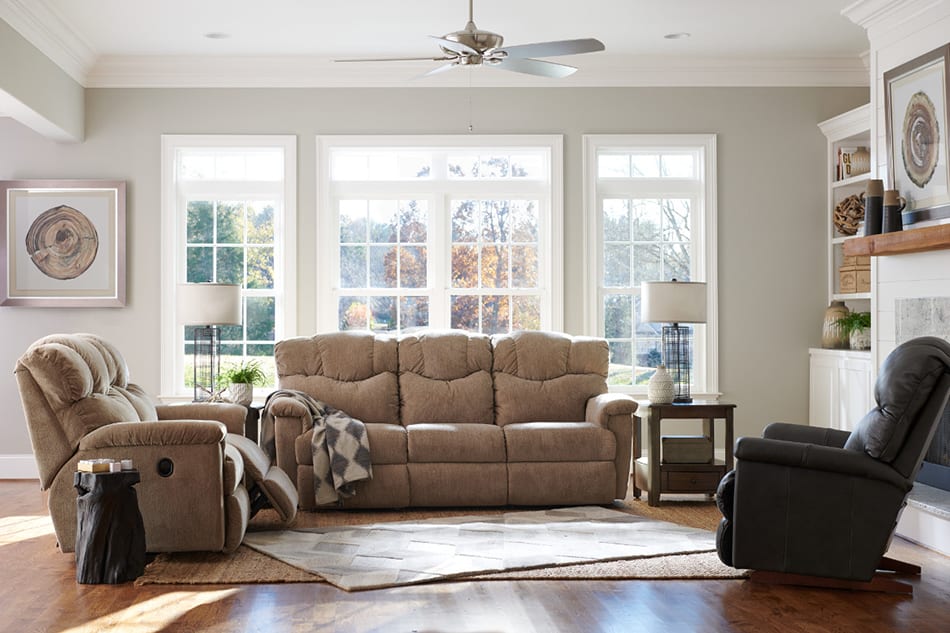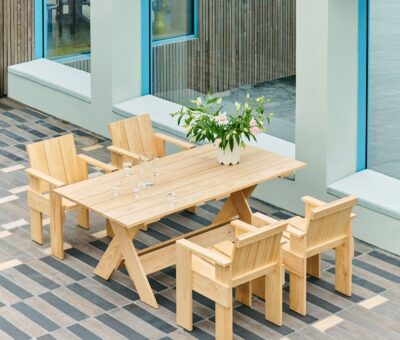La-Z-Boy: Top Tips For Living Room Design
Living rooms are a valued room in any home, and they serve a multitude of purposes – they are the main gathering space in which the family can unwind and relax, a place to enjoy some home entertainment, and they also serve as a room where visitors get to be entertained when they come over. As such – this room has to be designed with both functionality and aesthetics in mind.
Says Claire Gibson from leading furniture manufacturer, La-Z-Boy: “Your living room serves as the showpiece for visiting guests, as well as being a place you and your family can enjoy. As a result, there are certain issues that always come up when trying to arrange the furniture in this room. These issues can be easily resolved if you understand them before you start.” Here are her top tips for placing furniture in your living room:
The basics
When arranging your living room furniture, Claire says that there are four major things to consider, including:
- Track traffic flow: The layout of the room, the entrances and exits, as well as the furniture placement, will largely dictate the traffic flow and space. Be sure to leave enough space around your furniture so that people can comfortably and easily walk from one side of the room to the other.
- Establish a focal point: It is important to pinpoint the focal point of the room, and then design the room and place the furniture around it. The focal point can be anything – from a fireplace, to a bay window, or even a standout occasional chair, rug or objet d’art.
- Up against a wall: It is not always advisable to place your furniture right up against the wall. In larger rooms especially, it is a far better option to place pieces closer together to create a more intimate setting. As long as the backs of the various pieces of furniture are finished, there is no reason why they shouldn’t be on display. You can also add slender servers close to the back of a “floating” sofa to ground it.
- Create conversation areas: The main purpose of the living room is that it serves as a place for people to relax and spend time together. As a result, it is imperative that people can easily and comfortably communicate with one another, and so the furniture should be placed in a manner that encourages this.
Size and placement
“Don’t listen to what anybody says – when it comes to furniture, size matters,” jokes Claire. She offers some pointers on what to consider when choosing furniture for your living room:
Measure it up: Living room furniture makes up a sizeable investment, so it is essential that the pieces you choose suit the space from a functional and aesthetic point of view. “You don’t want pieces that are too big or too small for your living room, so my advice is to measure the space and draw up a floor plan of the room in question, before you buy any furniture. Sketch the room on a piece of graph paper, and cut out square blocks that are the same size as each piece of furniture that you want to purchase. Move them around and see where they will be best placed. This way, you can be sure that the pieces fit in the room,” notes Claire.
Sofas and chairs: Claire says that sofas and chairs are the mainstay of any living room – they are what make its use possible. As such, they should be proportionate to the room in question, as comfortable as possible, and visually appealing. When choosing the size of the sofa, you must consider the size of the room, but you also need to consider whether they will fit through the doorway leading into the room, advises Claire: “So often, people will purchase a large corner unit for example, only to find out when it is delivered, that they can’t fit it through the front door.” When it comes to comfort, Claire says that motion furniture always comes out on top. She explains that even living rooms where space is a premium can enjoy the benefits of motion furniture: “For smaller living rooms, you can invest in inclining motion furniture, instead of reclining furniture. Unlike a recliner, where the back of the seat reclines, the seat of an incliner moves forward to make space for the back to recline. This way, an incliner does not need extra space for reclining, and it can be positioned really close to a wall.”
Rugs and carpets: Rugs offers a great way of warming a space up and defining areas. This is especially helpful in larger open-plan spaces, where rugs can be used to define seating areas, dining areas, and the like. A major mistake many people make is to include rugs that are too small for the space in question. Claire says that a good rule of thumb when selecting a rug is to ensure that it is large enough so that all the furniture can sit on top of the rug. However, if this is not possible, then she says that you should at least ensure that the front legs of all upholstered pieces rest on top of the rug.
Coffee table: Usually found in the centre of a conversation seating area, coffee tables are highly practical pieces. They should have a height that is slightly lower than the seating surrounding it, and they should be approximately one-and-a-half, to two-thirds the length of the neighbouring sofa. For optimum functionality, coffee tables should be placed in such a manner that you can easily lean over and put down or pick up a drink without having to move from your seated position. Claire advises that the optimum distance between a sofa and a coffee table should be around 35cm to 45cm.
Side tables: These are a very useful addition to any living room. Claire notes that their number will largely depend on the amount of seating that you have in your living room: “It is advisable to include one on either side of a large sofa, or between pairs of chairs. Generally speaking, they ought to be about the same height as the arm of the chair or sofa they are next to.”
Contact: La-Z-Boy.
You might also like...
-
Save Up to 65% At Cielo This Black Friday!

Cielo’s annual Black Friday Deals are here! Ready your carts (in-store or online) to fill your home with fresh inspiration for the festive season and ...
-
Inova Contracts: Crate Collection

Celebrating Dutch designer Gerrit Rietveld’s 1934 Crate Collection, Rietveld Originals and Hay recently relaunched a respectful interpretation of the original designs. Based on a similar ...
-
Happy New Year

As we bid farewell to the old and welcome the new, may the coming year be filled with joy, prosperity, and exciting adventures. Here’s to ...
-
Minimalism is more than decluttering with Chair Crazy.

With Chair Crazy here are the short answer: All Minimalists live without clutter, but not all who declutter become minimalists. To really capture minimalism in interior ...





























